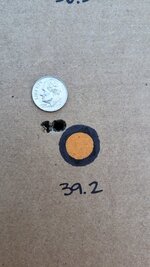Wildstreak
Lil-Rokslider
- Joined
- Dec 14, 2018
- Location
- Kentucky
When I started handloading I probably like most, I used a 2 die set that included a full length sizing die with an expander ball and a seating die. When I learned about neck bushing dies I made the switch pretty quickly, they made sense to me. Now I am seeing a trend move to expander mandrels. As far as I can tell a mandrel and button do the same thing with the exception that a mandrel gives you size options to customize how much you want to open the neck. But what I don't understand and maybe I am just an idiot (which is often the case) is I have seen/heard/read folks using both the mandrel and a bushing.
Can someone please explain this school of thought to me? Other than possibly fixing the neck from dropping the brass or whatever, I just don't understand using both.
Can someone please explain this school of thought to me? Other than possibly fixing the neck from dropping the brass or whatever, I just don't understand using both.


